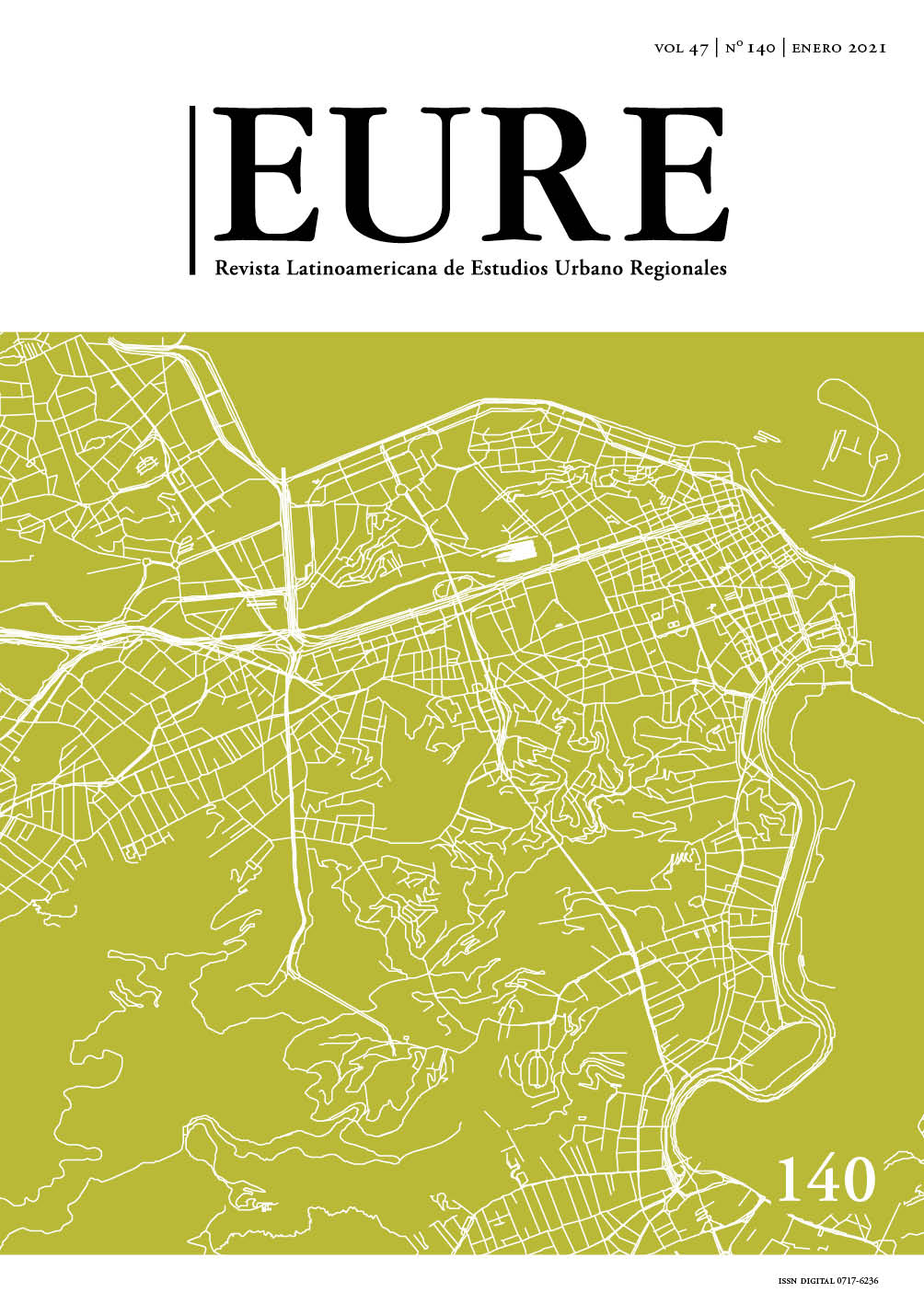The Conditions for JacobsÍ€™ City Diversity: A Test in Three Brazilian Cities
DOI:
https://doi.org/10.7764/EURE.47.140.12Keywords:
urban morphology, urbanism, violenceAbstract
Despite the undeniable importance of Jane JacobsÍ€™ work, relatively few studies have empirically tested her claims. In this work, we investigate the relationship between criminal occurrences, to measure the degree in which an area can be considered successful or not, and the main conditions for successful neighborhoods put forth by Jacobs in The Death and Life of Great American Cities: land use diversity, block sizes and population density. Adopting census tracts as territorial units, we investigated the urban areas of the three largest municipalities of Santa Catarina, Brazil - Joinville, Florianópolis (state capital) and Blumenau, through visual and statistical analyzes. The results show that the most central and most peripheral areas have the highest rates of criminal occurrence, which is also true for those with higher percentages of non-residential uses. High population density, on the other hand, was associated with greater safety, and block sizes was not a relevant factor for crime rates.
Metrics
Downloads
Published
How to Cite
Issue
Section
License
Copyright (c) 2021 Revista EURE - Revista de Estudios Urbano Regionales

This work is licensed under a Creative Commons Attribution 4.0 International License.
Al momento de aceptar la publicación de sus artículos, los autores deberán formalizar la cesión de derechos de autor a EURE, según las condiciones establecidas por la Revista.
Ésta establece que el autor autoriza a EURE de manera gratuita, exclusiva e ilimitada a reproducir, editar, publicar, distribuir, publicitar, comercializar y traducir el artículo, a cualquier soporte conocido o por conocer y desarrollar.
Del mismo modo, los autores aseguran que el artículo propuesto es original, no publicado y no propuesto para tal fin a otro medio de difusión.


